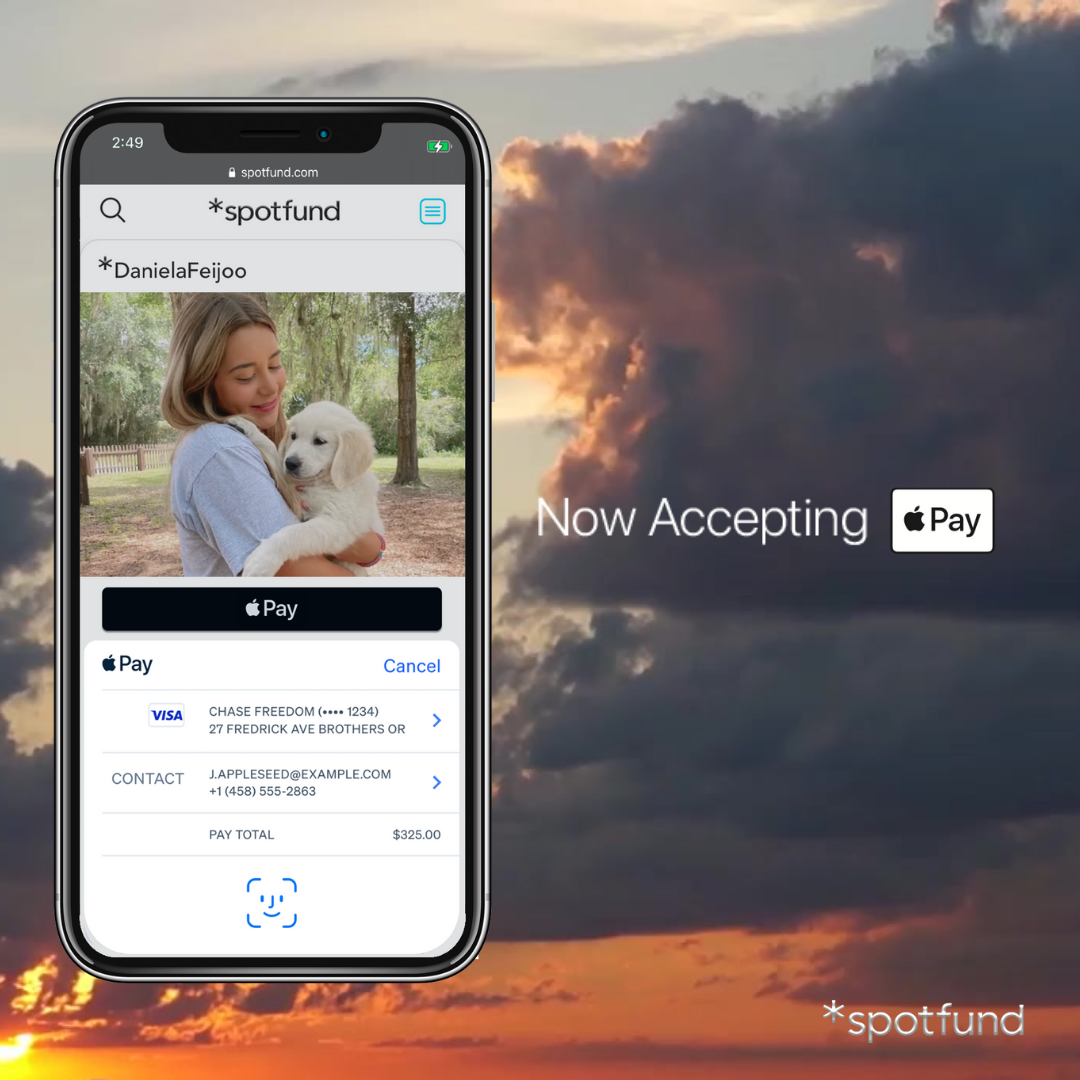For any nonprofit organization, whether it's just taking flight or has been soaring for years, fundraising plays a crucial role. It is not just about generating resources. Fundraising lies at the heart of an organization's survival, its ability to achieve its mission, and ultimately, its capacity to make a lasting difference in the world.
Fundraising efforts not only provide the financial backbone for nonprofits but also create opportunities for donor engagement, volunteer involvement, and community outreach. These efforts raise awareness, spark passion, and inspire action towards the causes that are being championed.
This is where the beauty of an effective fundraising strategy comes into play. A well-structured and meticulously executed strategic fundraising plan can amplify the impact of your work and help your organization sustain its efforts in the long run. It can help convert the spark of an idea into a full-blown transformative force that can change lives and communities.

Decoding the Fundamentals of Nonprofit Fundraising
Before we delve into the nitty-gritty of designing a successful fundraising plan, it's important to grasp the basics of nonprofit fundraising. Fundraising in the nonprofit realm isn't a one-size-fits-all strategy. There's a diverse array of fundraising avenues that you can tap into, each with its own set of characteristics, strengths, and challenges.
One common approach involves securing grants from governmental bodies, foundations, or trusts. These are typically competitive and require an application outlining the project you need funding for. Then we have individual contributions, which can range from small, one-off donations from private individuals to major gifts from wealthy donors.
Corporate partnerships present another powerful avenue. Many businesses are eager to align themselves with social causes to enhance their corporate social responsibility profile. They can offer direct funding, sponsorship for events, or in-kind donations of products or services.
Fundraising also often involves the planning and execution of events, which can range from small, community-based gatherings to large-scale galas or fun runs. Events serve a dual purpose, helping raise money while also fostering community engagement and increasing visibility for your cause.
However, to maximize the potential of these fundraising avenues, you must understand the critical role fundraising plays in your organization's longevity and impact.
Fundraising is the lifeblood of a nonprofit. The funds you raise fuel every aspect of your organization's operations, from program development and service delivery to staffing and administrative expenses. They provide the resources you need to achieve your mission and drive your initiatives forward.
But fundraising's impact extends beyond the balance sheet. A strong fundraising strategy helps increase your organization's visibility, broaden its support base, and reinforce its reputation within the community. It also provides opportunities for interaction with donors, volunteers, and beneficiaries, helping to build a community of supporters who are invested in your success.

Strategically Setting Your Fundraising Objectives
Once you've grasped the basics of fundraising, the next step is to set clear and strategic fundraising objectives. Objectives act as the compass that guides your fundraising initiatives, providing clear direction for your team and ensuring all efforts contribute to your overarching goals.
The importance of defining precise, quantifiable, and attainable fundraising objectives cannot be overstated. Precision in your goals provides a specific target to aim for, while quantifiability allows you to measure progress and success in concrete terms. Meanwhile, ensuring that your goals are attainable — while still ambitious — ensures your team feels motivated rather than overwhelmed.
Next, comes the question, how do we set these objectives? The planning process of determining fundraising objectives should ideally be based on your organization's needs and forecasted expenses. Start by assessing your current financial health and identifying your financial requirements for the upcoming period. Consider your operational costs, project expenses, staffing needs, and any other potential costs that might arise. Once you have a clear understanding of your financial needs, you can then set a fundraising target that aligns with these requirements.
To better understand this process, let's consider a real-world example of effective goal-setting in the nonprofit sector. Let's say we have a nonprofit organization named "Green Future," which is committed to environmental conservation. After a thorough financial assessment, they determined they need $500,000 for their next fiscal year to cover their program costs, operational expenses, and the launch of a new conservation project.
Given this requirement, they set a fundraising goal of $550,000, going slightly above their determined needs to account for unexpected costs and to build a financial safety net. This goal is then broken down into smaller objectives such as securing $200,000 in grants, raising $150,000 through corporate partnerships, generating $100,000 from individual donations, and obtaining $100,000 from fundraising events.
By strategically setting its fundraising objectives, a nonprofit organization has a clear, quantifiable, and attainable target to guide its fundraising efforts. This allows them to focus their resources and energies effectively, increasing their chances of successful fundraising and ultimately, the impact they can have on environmental conservation.

Profiling Your Prospective Donors
Understanding who your donors are, what motivates them, and how they prefer to engage with your organization is a key part of donor acquisition for a successful fundraising strategy. This fundraising process, often referred to as donor profiling or segmentation, can help you tailor your fundraising efforts to better resonate with potential supporters.
To begin, identifying, categorizing, and understanding potential donors involves collecting and analyzing information about current and prospective donors. You might start with basic demographic information, such as age, gender, location, and income level, but you should also delve deeper. Investigate interests, beliefs, hobbies, giving histories, and connections to your cause. Segment your donors into different groups based on these characteristics to help refine your approach.
Having a clear picture of your donors allows you to gain insights into donor motivations and preferences. For instance, some donors might be motivated by empathy, responding well to emotive storytelling and personal anecdotes. Others might be driven by results and prefer seeing quantifiable data about the impact of their donation. Similarly, preferences for engagement can vary - some donors might prefer digital communications, while others might respond better to phone calls or face-to-face interactions.
To effectively profile and understand your donors, it's valuable to leverage data analytics. With the help of various fundraising software, CRM systems, and data visualization tools, you can collect, manage, and analyze donor data to uncover patterns and trends. This information can help you predict future behavior, such as which donors are likely to become regular supporters, who are likely to respond to a fundraising event invitation, or which donors might be primed for an upgrade in their giving level.
By understanding your donors, you can create personalized and relevant fundraising campaigns that resonate with their motivations and preferences. This not only improves the chances of successful fundraising but also helps to build stronger relationships with your donors, fostering long-term support for your nonprofit organization.

Selecting Appropriate Fundraising Mechanisms
Once your fundraising goals are clearly defined, the next pivotal step in building a successful fundraising strategy is selecting the appropriate fundraising mechanisms. These mechanisms, or methods, are the channels through which you'll solicit and receive donations.
Each mechanism offers unique advantages. For instance, grant writing is a valuable mechanism that can lead to substantial funding, although it often requires a lot of time and specialized skills. Direct mail and email campaigns allow you to reach a large number of potential donors simultaneously, making them efficient tools for widespread fundraising. Fundraising events, such as charity runs or gala dinners, while they can require significant planning, offer the added benefits of community engagement and public visibility. Online fundraising, which includes crowdfunding and social media posts, leverages the power of the digital world to reach a global audience.
In your nonprofit fundraising journey, consider using *spotfund, an online fundraising platform that stands out for its zero platform fees. This ensures that more of your funds go directly towards your cause. Its easy-to-use interface facilitates effortless sharing of your fundraising campaigns across various social networks, amplifying your reach. With an impressive rating of 4.8 from Trustpilot, it's a reliable choice that comes highly recommended by users.
Create a fundraising campaign for your nonprofit!

The choice of your fundraising mechanism should not be random. Instead, it should be influenced by several factors, including your organization's capacity (in terms of staff, skills, and resources), the preferences and habits of your target donor group, your fundraising goals, and the nature of your cause. For example, if your donors are largely tech-savvy millennials, online fundraising might be a good fit. On the other hand, if you're targeting corporate donors, you might consider partnerships or sponsorships.
The key is to align your fundraising methods with both your donor segments and organizational needs. For example, if your nonprofit provides support to a local community, hosting community-based fundraising events might resonate well with potential donors. If your nonprofit has a global outreach or a younger demographic, harnessing the power of social media and online giving platforms could be beneficial.
Remember, the most successful fundraising strategy usually involves a mix of different mechanisms. This diversification not only helps you reach a wider range of donors but also insulates your organization against the failure of any single method. Thus, carefully consider your options and select a blend of fundraising mechanisms that best suit your organization's unique circumstances and goals.

Structuring a Fundraising Calendar
Structuring a fundraising calendar is a key component of an effective fundraising plan. A well-planned calendar serves as a roadmap for your fundraising activities throughout the year, helping to ensure you're continually making progress toward your fundraising goals.
The value of a fundraising calendar lies in its ability to provide a clear overview of all fundraising activities. It helps you organize and coordinate different fundraising efforts to avoid overlapping campaigns or missed opportunities. Additionally, it provides your team with a clear timeline for the preparation, execution, and follow-up of each activity, aiding in efficient resource allocation and task delegation.
When scheduling crucial dates, deadlines, and events in your fundraising calendar, consider the following guidelines:
-
Plan ahead: Aim to map out your fundraising calendar several months, or even a year, in advance. This gives your team ample time to prepare for each activity.
-
Balance your calendar: Avoid clustering too many activities close together, which can strain your team and potentially overwhelm your donors. Aim for a balance between active fundraising periods and quieter times for planning and donor stewardship.
-
Align with key dates: Leverage nationally recognized dates or holidays, such as Giving Tuesday or year-end giving seasons, when people are more likely to donate. Similarly, if there are key dates relevant to your cause, such as World Environment Day for an environmental nonprofit, consider scheduling activities around these dates.
-
Include everything: Don't just include the dates of the fundraising activities themselves. Also mark out preparation periods, deadlines for tasks, and times for follow-ups and evaluations.
The rise of technology has introduced a variety of digital tools that can make managing your fundraising calendar more efficient. Online calendars and project management tools allow for real-time updates, reminders, and easy collaboration among team members. Furthermore, specialized fundraising software can help you track progress toward your goals and even automate certain processes, like sending thank-you emails after a donation is made.
By structuring and properly utilizing a fundraising calendar, you ensure that your fundraising efforts are well-coordinated and strategically timed, increasing their likelihood of success.

Assembling Your Dedicated Fundraising Team
Behind every successful fundraising campaign is a dedicated and passionate team. In the realm of nonprofit fundraising, having a specialized team focused on fundraising activities is not just a luxury, but often a necessity.
A specialized fundraising team serves as the driving force behind your fundraising. They strategize, plan, execute, and monitor your fundraising activities, ensuring that they align with your organization's goals. They also engage with major donors, build relationships, and champion your cause to the outside world. In essence, they serve as the heart and soul of your fundraising endeavors.
Within a fundraising team, there are different roles that serve unique functions. These may include:
-
Fundraising Director: Oversees the entire organization's fundraising strategy, ensuring alignment with the organization's goals and monitoring progress.
-
Grant Writer: Specializes in researching and writing grant proposals to secure funding from foundations, government agencies, and other grant-making bodies.
-
Major Gifts Officer: Focuses on building relationships with high-net-worth individuals capable of making significant contributions to your organization.
-
Event Coordinator: Manages fundraising events, from planning to execution.
-
Donor Relations Officer: Manages relationships with donors, ensuring their continued support and satisfaction.
-
Fundraising Data Analyst: Uses data to evaluate the effectiveness of fundraising activities and provides insights for strategy refinement.
When building your team, consider the skills and experiences needed for each role. You can fill these positions by hiring new staff, reallocating existing staff, or even recruiting skilled volunteers.
However, assembling the team is just the first step. Keeping them motivated and equipped with the necessary skills and knowledge is equally important. Regularly recognize their efforts and achievements to boost morale. Provide them with opportunities for professional development, such as fundraising seminars or workshops, to keep their skills sharp. Remember, a well-trained, motivated team is your most valuable asset in achieving your fundraising goals.
By assembling a dedicated fundraising team, your organization can ensure that its fundraising efforts are strategic, organized, and effective, setting the stage for long-term sustainability and impact.

Crafting an Engaging Communication Plan
In the realm of nonprofit fundraising, communication is key. An effective communication plan not only informs potential donors about your cause but also motivates them to contribute to your mission. It's a critical bridge that connects your organization with its supporters.
Crafting a compelling narrative about your cause is the starting point. Your story should articulate why your work is important, the difference it makes, and how donations help drive your mission forward. Creating a persuasive narrative involves focusing on the impact rather than the processes. Highlight success stories, share testimonials, and use compelling visuals. Importantly, make sure your narrative aligns with your organization’s mission and values and resonates with your target donors' interests and values.
Next, it's important to identify the most effective channels for communicating with your donors. This may include email newsletters, social media platforms, direct mail, your website, or even personal phone calls. The right mix of channels will depend on your donor demographics, resources, and the nature of your message. For instance, while social media might be a powerful tool for engaging with younger donors, more traditional channels like direct mail might be more effective with older supporters.
Finally, when structuring your communication plan, aim for a balance that maintains donor interest without causing fatigue. Overcommunication can lead to your messages being ignored, while under-communication can cause donors to feel disconnected from your cause. Consider different types of communication, such as updates on your work, success stories, donation requests, and appreciation messages.
Remember to make your communication two-way - invite your supporters to engage with your content, seek their opinions, and encourage them to share your cause within their networks. Also, monitor the responses to your communications, such as email open rates or social media engagement, to understand what works best for your audience.
Crafting an engaging communication plan is as much an art as it is a science. It involves empathy to understand your donors, creativity to craft compelling messages, and strategic thinking to deliver those messages effectively. When done right, it can greatly enhance your fundraising performance and build a community of dedicated supporters for your cause.

Assessing and Fine-tuning Your Fundraising Plan
Fundraising is a dynamic process, not a static one. It requires constant monitoring, assessment, and refinement to ensure continued success. That's why the final step in creating an effective fundraising plan is to set up mechanisms for regular evaluations and adjustments.
Regular evaluations and adjustments are crucial as they allow you to identify what's working well and what isn't in your fundraising strategy. Without these, you may continue to pour resources into less effective strategies while missing out on potential opportunities.
An effective way to measure the success of your fundraising efforts is by defining Key Performance Indicators (KPIs). KPIs are quantifiable measurements that can provide insights into the effectiveness of your fundraising activities. These may include total funds raised, average donation size, donor retention rate, cost per acquisition of new donors, and response rates to fundraising appeals. By regularly tracking these KPIs, you can gauge whether you're on track to meet your fundraising objectives and identify areas that need improvement.
However, it's not enough just to collect data. It's what you do with it that counts. Using data and feedback from your donors, staff, volunteers, and other stakeholders can help you continually refine your fundraising strategy. For example, if data shows that email campaigns are yielding a low return on investment, it may be time to assess your messaging, audience targeting, or the platform itself.
Furthermore, always be open to feedback. Regularly survey your donors to understand their experiences and preferences. Also, encourage feedback from your team, as they often have first-hand insights into what's working and what's not.
Remember, fundraising is a marathon, not a sprint. Regularly assessing and fine-tuning your plan will help you navigate the inevitable changes and challenges that come your way. By doing so, you ensure your fundraising strategy remains effective, efficient, and well-aligned with your organization's mission and goals.

In conclusion, fundraising is the lifeblood of any nonprofit, fueling its mission and impact. With proper planning, a dedicated team, strategic communication, and continuous assessment, your organization can effectively raise the funds it needs. A powerful tool to aid you in this journey is Spotfund, a reliable and cost-effective online platform that amplifies your reach and simplifies your fundraising efforts.
Don't let financial constraints hold back your nonprofit's potential. Start using *spotfund today and take your fundraising to new heights.
Click to check out more fundraising ideas for nonprofit organizations!

